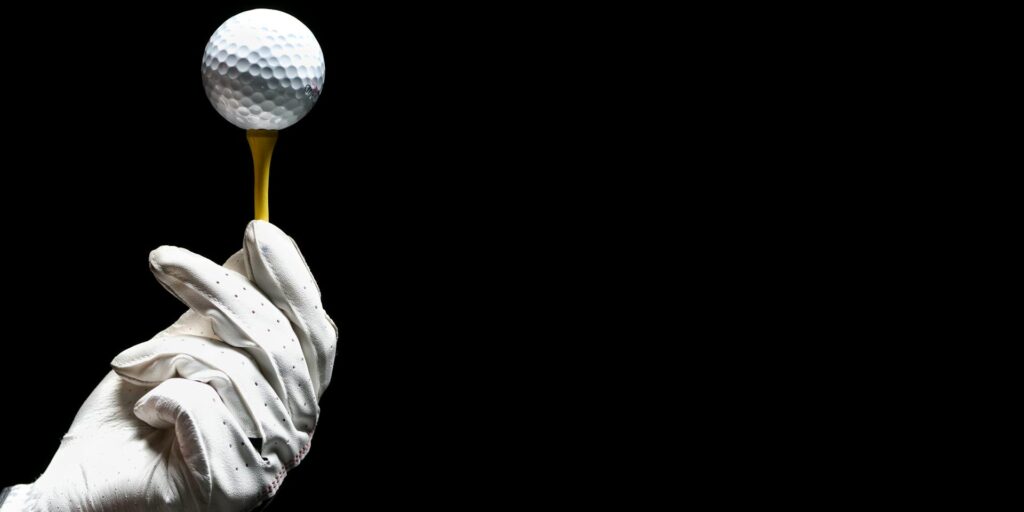- Trademarks Act not meant to protect Canadian sensibilities - April 25, 2024
- U.S. lawmakers tee up copyright protection for golf courses - March 6, 2024
- Remain vigilant over your licensees in trademark agreements - January 22, 2024
By Tony Poland, LegalMatters Staff • A push to amend United States law to extend copyright protection to golf courses raises interesting issues about the kinds of works that can be protected by copyright, says Toronto intellectual property lawyer John Simpson.
The BIRDIE Act – Bolstering Intellectual Rights against Digital Infringement Enhancement Act – was introduced in Congress by U.S. Reps. Brian Fitzpatrick and Jimmy Panetta in February with an aim to modernize copyright provisions in that country.
“Each artist, creator, or designer deserves the full protection of our copyright law, and golf course architects should be no different,” Fitzpatrick told Sportico. “Piracy and unauthorized replication of golf course designs in digital or virtual simulations threaten the livelihoods of the profession.”
Fitzpatrick says it is an idea whose time has come.
‘Justly compensated for their artistic ingenuity’
“Other aspects of the game like golf balls, golf clubs and golf attire receive some form of intellectual property protection,” he explains, adding the legislation would “provide legal parity between structural architects and golf course architects and ensure these hardworking professionals are justly compensated for their artistic ingenuity.”
Sportico reports the move for copyright protection comes “at a time when golf courses and holes can be replicated with limited legal risk and as golf simulators become more able to replicate the look and feel of the real thing.”
Simpson, principal of IP and new media law boutique Shift Law Professional Corporation, says the bill calls attention to “how intellectual property rights are being impacted by technological advancements.”
“In this case, there is a concern about virtual golf simulators and how they are replicating real-world golf courses,” he tells LegalMattersCanada.ca. “It is a good example of how intellectual property rights are being engaged in disputes that are likely to arise as more of the real world gets reproduced in the digital world.”
May be more inclined to take action
Simpson says while golf course simulators have been around for some time, course designers and owners may be more inclined to take action as the simulators “get more and more realistic.”
“If I was an owner of a golf course, I would want to be able to license rights in it,” he says. “The more true-to-life the simulations become, the more there is a potential revenue stream for intellectual property rights owners.
“First, there would be the trademark rights. For instance, if you wanted to use the name Pebble Beach when branding your simulator, you might have to pay a licensing fee,” Simpson adds. “If you are recreating the actual course, then you might need a copyright license that covers the design of the course.”
Given advances in technology, “it is possible to someday have more people playing a digital simulation of a golf course than the real-world version,” he says.
Simpson says the question of extending copyright protection to golf courses has not been fully explored in Canada.
‘It is an interesting question’
“It is an interesting question and to my knowledge, it hasn’t been litigated in Canada. I am not sure to what extent it has even been discussed in relation to Canadian law,” he says. “However, it sounds like in the United States it is a concern and it has been determined that their Copyright Act as it stands does not protect golf courses.”
Simpson says that amendments to the Canadian Copyright Act may not be needed to protect golf course designs.
“I would argue that under our present legislation, you could assert copyright in a golf course design and enforce it against someone who creates an exact replica in the real or digital world,” he says.
“Under Canada’s Copyright Act, protected works can include paintings, drawings, maps, charts, photographs or works of artistic craftsmanship. Wherever you have a definition that starts with the word ‘includes’ it suggests that there are other things such as golf courses that could be covered.
“Certainly, designing and developing a golf course requires skill and judgment. That is something required for copyright protection,” Simpson adds.
‘All the attributes of a copyright-protectable work’
He says it can be argued that a golf course “includes all the attributes of a copyright-protectable work under the Copyright Act.”
“The entire basis for intellectual property rights, the whole justification, is to encourage and create incentives for innovation,” says Simpson. “If you create these incentives that enable people to design and build something, there is a justification for awarding intellectual property rights.”
He says one potential offshoot of copyright protection for a golf course is that there could also be moral rights attached to it.
“The author of a work has the right to the integrity of their work,” Simpson says. Perhaps the best example in Canada of an infringement of moral rights was when the Eaton Centre put red Christmas bows around artist Michael Snow’s geese sculpture.”
Snow took the mall to court, comparing it to “putting a wristwatch on Michelangelo’s David or earrings on the Venus de Milo,” the Toronto Star reported.
“If a golf course has copyright protection, that would conceivably allow the owner to argue that putting up some big, ugly industrial building next to their course infringes on their moral rights to the Integrity of their work,” says Simpson. “That would have some interesting implications.”

